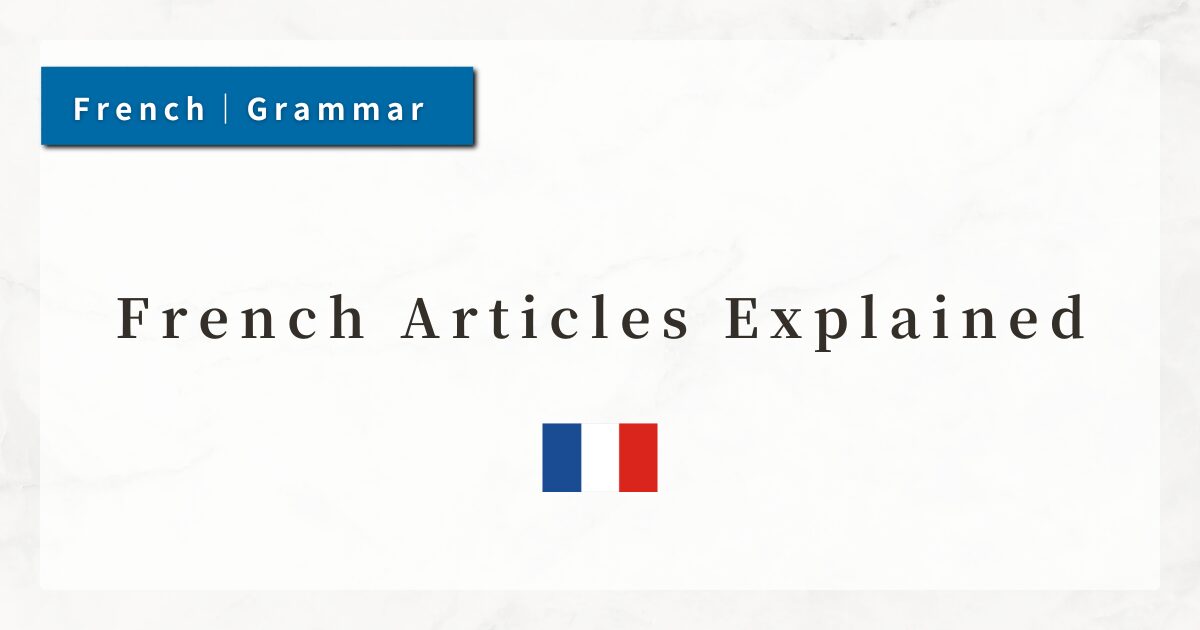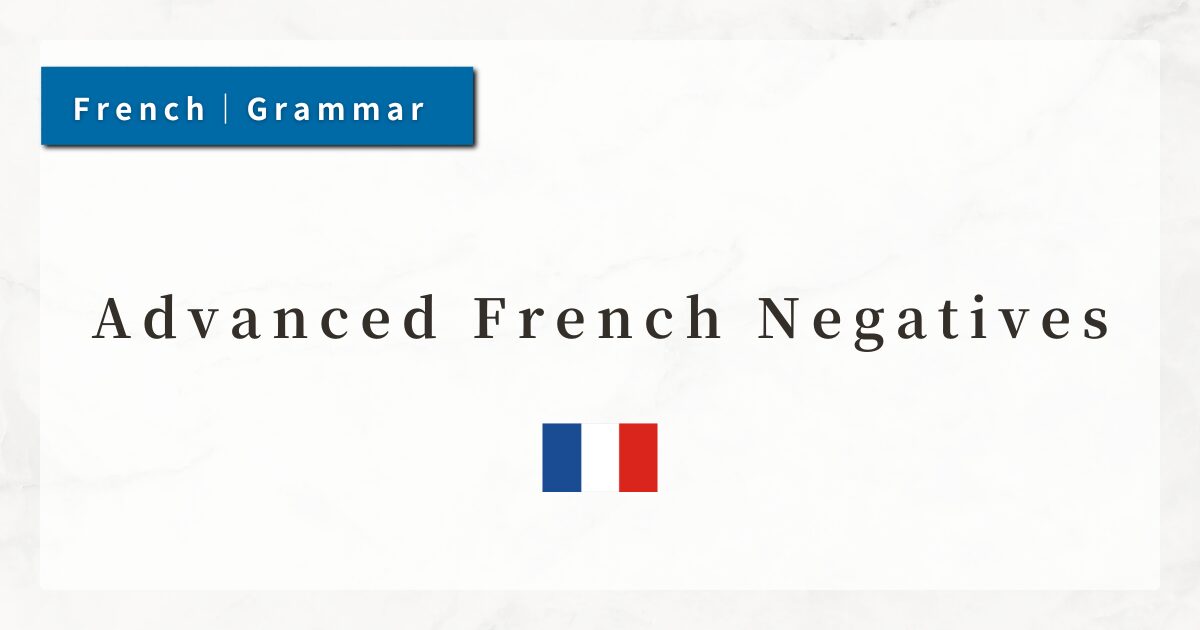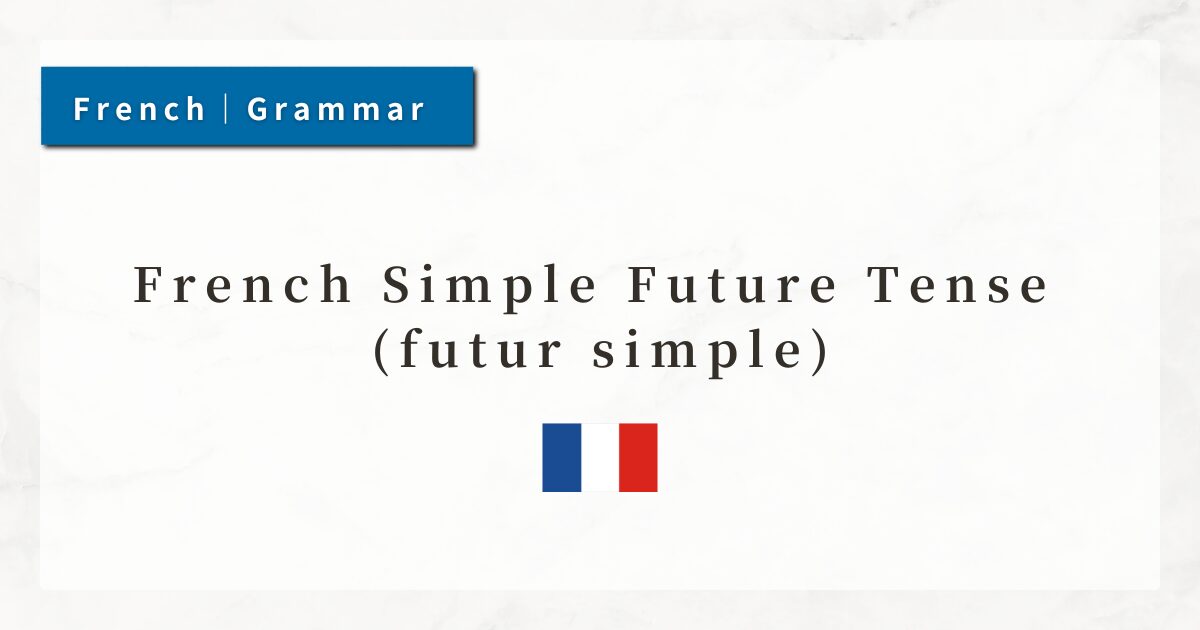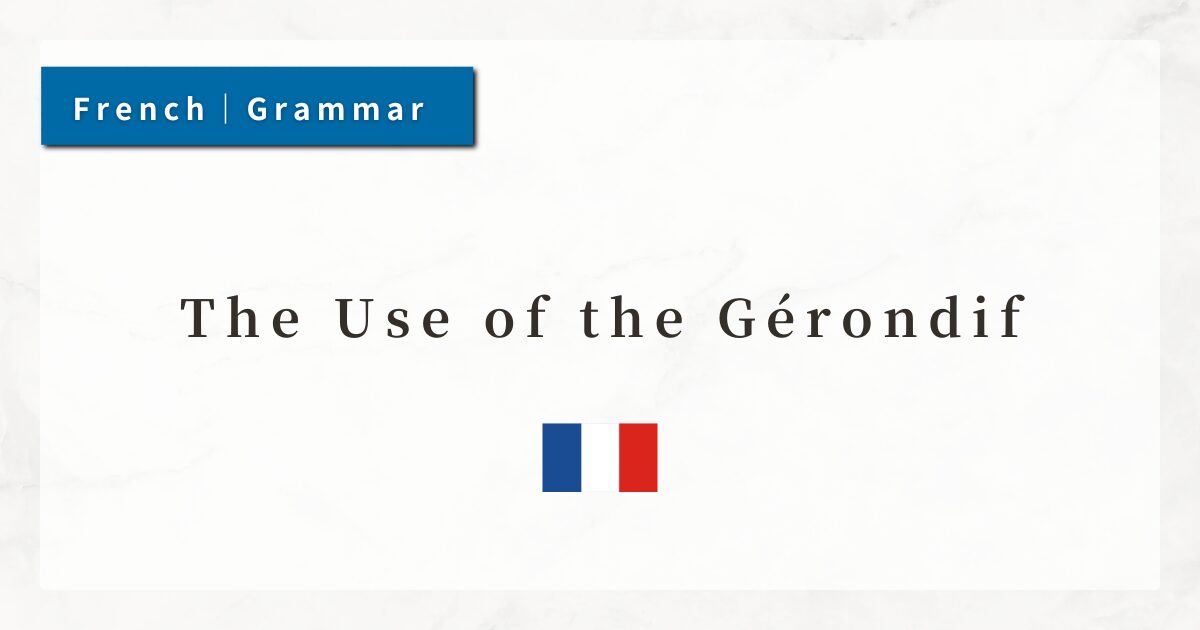#4 French Articles Explained | Definite and Indefinite Articles with Examples

In French, it is standard practice to place an article before a noun.
Among these, the definite articles (le, la) and the indefinite articles (un, une) require particular attention in terms of usage.
This lesson explains the difference between definite and indefinite articles and the rules for using them correctly, so that you can handle nouns with accuracy.
1. What Are Definite and Indefinite Articles?
In French, articles appear before nouns. They are a key grammatical element indicating:
- What the noun refers to
- Whether the noun is known or unknown to the listener
- Whether the noun is singular or plural
- Whether the noun is masculine or feminine
Articles are divided into two main types.
1-1. Definite Articles
Definite articles are used when both the speaker and listener know what is being referred to—in other words, when the noun is specific.
| Form | Article | Example |
|---|---|---|
| Masculine singular | le | le livre (the book) |
| Feminine singular | la | la pomme (the apple) |
| Plural (both genders) | les | les enfants (the children) |
Definite articles are used for:
- Things already mentioned in conversation or text
- Well-known items or concepts
- Abstract nouns
Examples:
- Le soleil (the sun)
— commonly known as a unique celestial body - La musique est belle. (Music is beautiful.)
— applies to abstract nouns - J’ai vu un film. Le film était ennuyeux.
(I watched a movie. The movie was boring.)
— second sentence specifies the film mentioned earlier
1-2. Indefinite Articles
Indefinite articles are used when the item is being mentioned for the first time or is not specifically identified for the listener.
They are often translated as “a,” “an,” or “some,” and typically appear with new information.
| Form | Article | Usage | Example |
|---|---|---|---|
| Masculine singular | un | “a … / one …” | un livre (a book) |
| Feminine singular | une | “a … / one …” | une pomme (an apple) |
| Plural (both genders) | des | “some … / several …” | des enfants (some children) |
Indefinite articles are common in the following situations:
- Introducing a person or object for the first time:
— Il y a un chat dans la rue. (There is a cat in the street.) - When quantity is unspecified:
— Elle a des livres intéressants. (She has some interesting books.)
2. Factors That Determine Article Choice
The choice of article depends on four main factors:
- Whether the noun is specific (definite vs. indefinite)
- Number (singular vs. plural)
- Gender (masculine vs. feminine)
- Context (already mentioned / general concept)
2-1. First Mention → Indefinite, Subsequent Mentions → Definite
Example:
- J’ai lu un livre. Le livre était passionnant.
(I read a book. The book was fascinating.)
2-2. General Concepts / Abstract Nouns → Definite Article
In French, abstract concepts such as “music,” “sports,” and “emotions” normally take the definite article.
- J’aime la musique. (I like music.)
- Le courage est important. (Courage is important.)
2-3. Note on the Indefinite Article des
The indefinite article des means “some” or “several,” but when an adjective precedes the noun, des changes to de.
- des enfants (children) → de beaux enfants (beautiful children)
3. Summary
- Definite articles (le, la, les) are used for specific people, objects, or nouns already mentioned.
- Indefinite articles (un, une, des) are used for new or unspecified items.
- Articles change according to the gender and number of the noun, so it is best to learn nouns together with their articles.
- General concepts and abstract nouns typically take the definite article.




